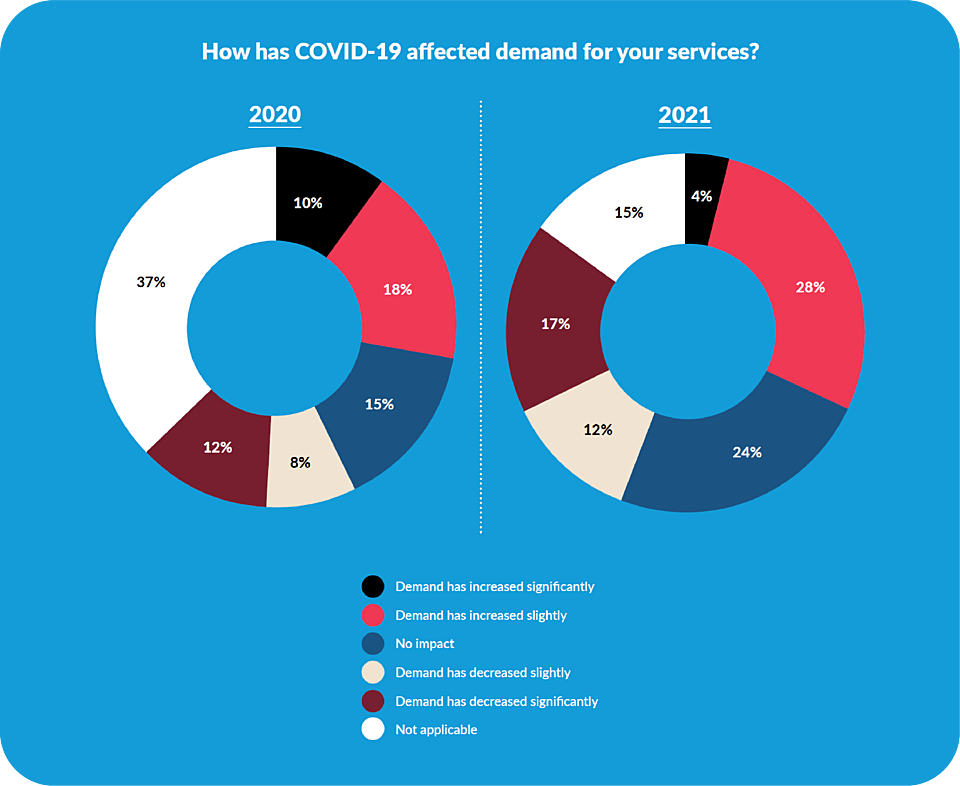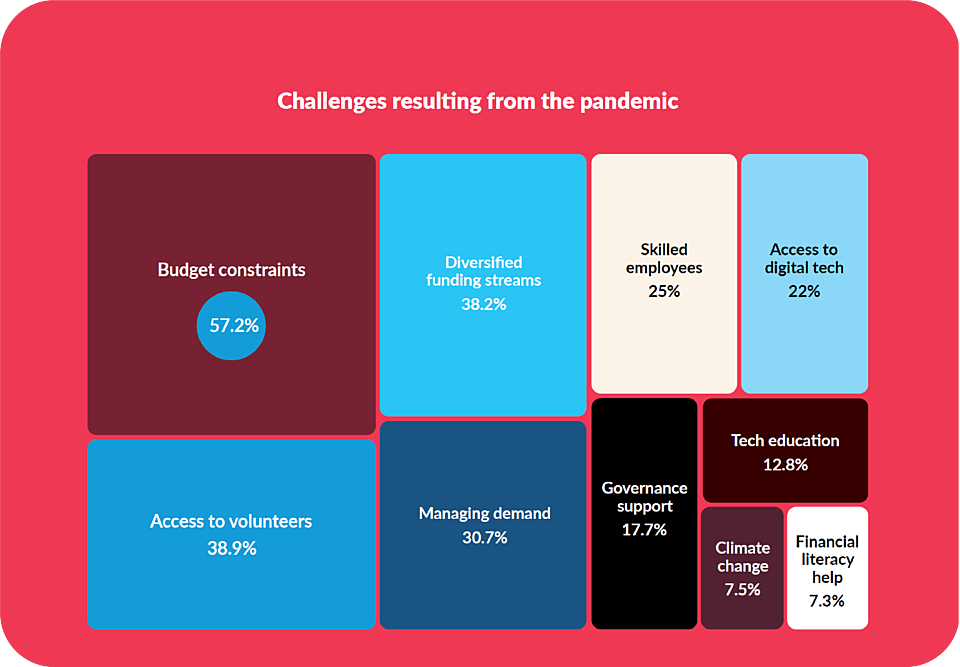Help sheet: With demand rising for not-for-profit services, something has to give

Not-for-profits in Australia face growing demands as a “trilogy of terror” sparked by the pandemic sees demand spike, volunteering slump and donations wane.
Those trends are outlined clearly in Our Community’s June 2021 study into the impact of COVID-19 on not-for-profits. You can read a snap summary of the findings here, and the full report here.
One key finding is that a year on from the start of pandemic, 52% of groups report more demand for services. This help sheet is designed to help you consider some strategies to address that spike.
If you’re BHP or Myer, increased demand is an unalloyed good, feeding directly into profits, bonuses and dividends. Not-for-profits, not so much. It’s good to get confirmation that you’re filling a real need, but there’s no automatic linkage between demand and reward. Your donors may heed your call, but there are a lot of calls out there.
If you can get more money in the door then you’re laughing.
If you’re faced with having to deliver more services on the same income then you’re up against hard choices. This is where the board has to lay out the parameters. If you’re sure you’re maximising your fundraising (and if you want to review that, have a look at the Our Community Funding Centre) then your choices are working harder, increasing efficiency or rationing your services.

Work harder
This is the first response of most NFPs, but it’s not a lasting solution. NFP staff are generally overworked already, and upping expectations risks burnout. Unless you’re certain it’s a transient phase, you’re better off doing more or less the reverse – bringing in some way of checking that your more conscientious staff are going home on time and taking their full leave allocations. They’ll last longer and produce more.
Increase efficiency
Not-for-profits exist partly because for-profit firms find the field unprofitable, which these days tends to mean labour-intensive and resistant to mechanisation or technology. That makes it hard to increase productivity. Still, look over your work and ask yourself what tasks can be moved online, or done with software. Are your people still typing out their reports, or are they using dictation on a tablet? Can anything be delivered on Zoom and save travelling time?
There are, of course, things you could do to increase your efficiency. A 2019 Canadian report said
“Capacity allowing the sector to respond to demand…., will rely not only on increased revenue and a full complement of volunteers and staff, but also on better and more technology, more meaningful impact assessment, continuous learning opportunities for staff and volunteers, more and better collaboration with other sectors and other organizations, and adequate supports for organizations that are smaller and/or are located outside urban centres."
That’s good advice, but it may or may not be feasible in the short term.

Ration your services
If demand has really risen to a level that you can’t meet, then you have to ration out your services. Nobody wants to do this, but if your resources are limited it’s impossible not to. There are several ways to handle this, and you may just have to choose the least repulsive.
Ration by cost
This is the customary method of bringing demand in line with supply across the economy. If you can’t meet demand, put up your prices till demand drops. The trouble is, of course, that it penalises those poorer people that not-for-profits are supposed to be helping. It’s possible to water down the effect of this by giving scholarships to the most serious cases, but any reliance on payment is going to produce the same tendencies.
Some researchers dispute this, pointing out that even free services are in practice used more by the (better-informed) well-off and what counts is your overall outreach profile; you can review their arguments here.
Ration by waiting list
If you can’t reduce the demand, then you can spread it out by simple timetabling. The first available vacancy will automatically become progressively further way. This method allows you to avoid setting priorities, but also means you have no control over your intake.
Ration by exclusion
Draw the boundaries of your target group more narrowly, and tighter. Reduce the spread of your offerings – take on fewer resource-intensive serious cases or, alternatively, fewer mild cases that have lesser needs. Confine your geographic reach. Cut your coat to suit your cloth.
Ration by spreading the butter thinner
Prioritise the totality of your offerings – what do your clients value most? Are there any parts you could skimp on, or postpone? Can you abandon home visits, or offer less one-on-one care?
Ration by need (triage)
If you have to choose, then you probably should go back to your mission. Work out who needs your services most, and serve them first. This may require some vigorous debate, where you try to bring to the surface your unspoken assumptions and, if possible, couch them numerically. That’s the way, in theory, the vaccine rollout operated – 1a, 1b, 1c – with an element of waiting list added.
None of these alternatives are attractive, and that may drive you to put more into your fundraising or your management to avoid them, but needs must when the devil drives. Any or all of them should be carefully recorded to support your claims for increased funding if the opportunity comes up.
There’s a story by American humourist James Thurber about a burrow-full of rabbits who were being harried by foxes. They decided that something should be done, and went for counsel to the wise old owl. The Owl thought, and eventually told them “What you need is a retaliatory threat capacity. You’ll have to grow sharp teeth and big claws.” Wonderful, said the rabbits, why didn’t we think of that, obviously sensible – oh, and one more thing: how do we grow sharp teeth and big claws? “Don’t ask me,” said the owl, “I’m just an ideas man.”
Advice is easy; carrying it all out is hard. You know your job. Everything we say you probably thought of years ago (and if you have your own secrets, why not share them? We’ll publish any responses). In the long term, the remedy is probably changes in economic circumstances (more jobs), government policy (fewer forms), and donor culture (bigger gifts), but in the long term, as Keynes said, we’re all dead. Tough times mean tough choices.
If it’s any consolation, it’s much better to have too many clients than too few, and if you can cope with this flood you’ll be able to make a case for expansion.